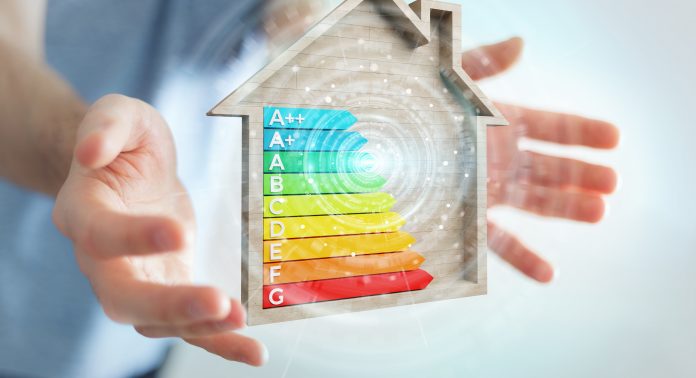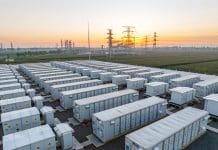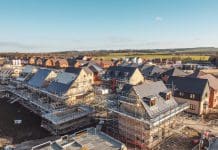The government has said that this time next year it will bring into force changes to Part L of the Building Regulations, which cover the conservation of fuel and power in new-build homes
It represents the first update to Part L of the Building Regulations in nearly a decade, is the next step on the road to net zero in 2050, and has huge implications for the construction of all new homes., including those built by housing associations and local councils.
Here, the Consortium Procurement Construction (CPC) offers a short guide to what the Part L changes are, what they mean for registered providers and housebuilders, and what you can do now to make sure you’re ready.
What changes are being made to Part L?
The forthcoming changes are part of the roadmap to the introduction of the Future Homes Standard, currently due to be implemented in 2025. That policy will require all new homes to be ‘zero carbon ready’, meaning they will be properly equipped for the decarbonisation of the energy grid.
The Future Homes Standard will demand homes produce at least 75% less carbon emissions than what’s currently allowed under the Building Regulations, which will mainly be achieved by moving the UK’s homes to very high efficiency electrical heating instead of gas boilers.
This is a huge ask of the industry, which faces not inconsiderable challenges in terms of skills, resource and supply chain capacity.
To help ease the way to the Future Homes Standard, the government has said it will introduce a 2022 interim update to Part L, which will require at least a 31% reduction in emissions compared to current standards. Alongside this, Part F, which governs ventilation, will also be updated.
Emphasis will be on the adoption of a fabric first approach, with higher minimum fabric standards for the envelope and improved airtightness (read our blog on what fabric first means), along with the use of low-carbon heating technologies. The maximum permitted U-values in the 2022 Part L will also be decreased slightly, ahead of more stringent decreases in 2025.
A new performance metric will also be ushered in with the new Part L. Primary energy will become the principal measure, which takes account of upstream energy production alongside the efficiency of a home’s heating system, while carbon dioxide emissions targets will be retained, along with the Fabric Energy Efficiency Standard (for now, as it’s expected this measure will become obsolete as the energy grid decarbonises).
It’s hoped that by implementing this interim step in 2022, the industry will be able to build the needed skills and supply chain capacity to meet the increased demands of the Future Homes Standard from 2025.
What to do now
You’ve got a year to prepare for the interim uplift – although the legislation is going to be introduced towards the end of this year, it won’t come into force until next June.
It’s worth taking a look at your pipeline of new-build work now, to ensure you know which version of Part L will apply to which projects. For any projects with plans or notices submitted before next June, there’s a cut-off date of June 2023 for building to start for the current Part L (2013) to apply. From that point on, older versions of Part L will no longer apply to any projects, regardless of when plans or notices were submitted.
Any plans or notices submitted after June next year must adhere to the new interim Part L standards.
It is also worth bearing in mind that this is a very short interim period, with 2025 ushering in the next Part L update. Although the proposed technical specification for that will not likely be available until 2023, the Government has given an indication of the U-values it will expect.
Can you start talking to your suppliers now, to ensure they have the 2025 update front of mind? The better equipped you are for the Future Homes Standard now, the easier it will be to comply in four years’ time.
A word on heat pumps
As well as ensuring homes produce 75% less CO2 than current standards, the Future Homes Standard will mean “heat pumps…become the primary heating technology for new homes”.
This, in conjunction with the decarbonisation of the energy grid, will move the country away from gas-powered heating.
Although hydrogen is likely to play a part too, all the indications are that the Government will be investing the majority of its energies in promoting heat pumps through its future policies. We’re sure to know more when the imminent Heat and Buildings Strategy is unveiled.
We’ve long spoken about the leading role that public sector housing will have to play in helping the country achieve net zero by 2050; the widespread introduction of heat pumps is a key part of that.
Admittedly, the supply chain is not yet ready. But by investing in heat pumps now, notably through a big push on skills and training, we can start to help build that capacity, paving the way for a greener future. And the more you look to incorporate heat pumps now, the easier it will be to meet future Government-legislated targets.
How CPC can help
We can help you meet the future Part L requirements through our frameworks and our appointed suppliers.
Our Energy Efficiency Consultancy (N8C) appointed companies can help you start your journey to more energy-efficient new-build homes.
The Offsite Construction of New Homes (NH2) framework provides a route to some of the most energy-efficient homes in the country, built through modern methods of construction (MMC) that provide very high levels of airtightness and fabric standard.














![[Video] Fireco: 80 new fire doors required for residential flats in London](https://www.pbctoday.co.uk/news/wp-content/uploads/2025/04/2024-06-01-Lords-view-one_1200x750_004-218x150.webp)